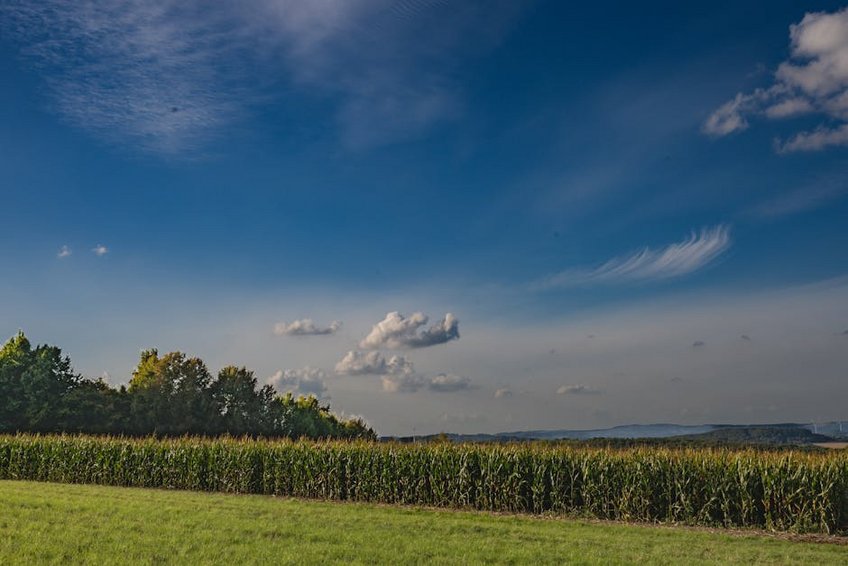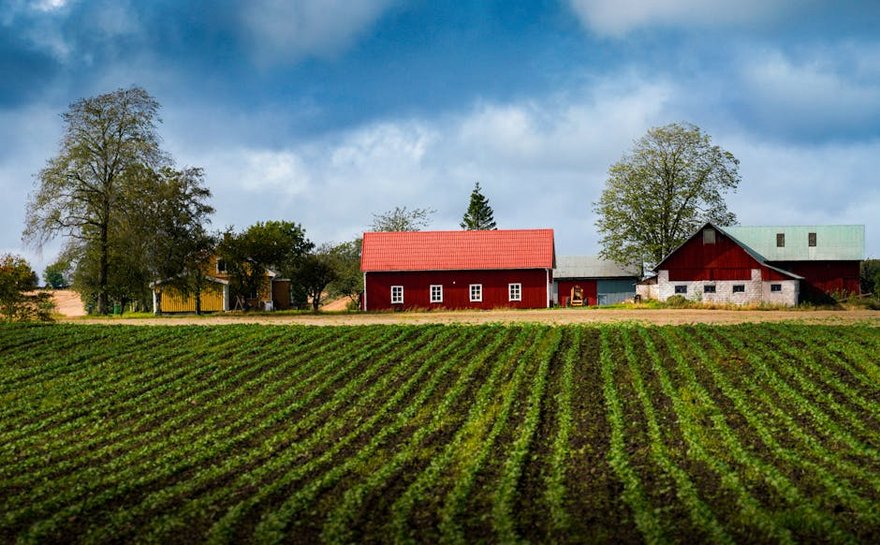Farm Harvest Experience – A Guide to Authentic Agricultural Adventures
Imagine waking up to the scent of fresh earth and ripening crops, spending your days harvesting sun-warmed fruits and vegetables alongside local farmers, and ending each evening with farm-fresh meals under starry skies. A farm harvest experience offers this incredible opportunity to connect with the land, understand where your food comes from, and participate in age-old agricultural traditions. Whether you’re seeking a peaceful retreat from city life, an educational family vacation, or simply a deeper connection to nature, these working farm stays provide unforgettable memories and valuable insights into sustainable living. The growing popularity of agritourism has made farm harvest experiences more accessible than ever, with options ranging from weekend apple picking excursions to month-long vineyard harvests in picturesque countryside settings across America and Europe. You’ll discover that there’s something profoundly satisfying about getting your hands dirty and contributing to the food production process while learning traditional farming techniques from generations of agricultural experts.
Farm Harvest Experience Essential Information – What You Need to Know
Before embarking on your agricultural adventure, understanding the basics of farm harvest experiences will help you choose the right option for your interests and comfort level. These immersive vacations typically involve staying on a working farm and participating in daily activities, which might include harvesting crops, caring for animals, preparing farm products, or helping with seasonal tasks. The level of involvement varies significantly between farms – some offer light recreational picking experiences perfect for families with young children, while others provide serious agricultural work for those seeking authentic farming life. Most farm stays operate from spring through fall, with peak seasons aligning with specific harvest times: berry picking in early summer, vegetable harvests in late summer, and apple or grape harvesting in autumn. You’ll find that each farm has its own unique character, from small organic operations focusing on sustainable practices to larger commercial farms offering comprehensive agritourism programs.
Types of Farm Experiences – Choosing Your Adventure
- Harvest-focused stays: Participate in picking fruits, vegetables, or grapes during peak season, often with hands-on training from experienced farmers
- Working farm experiences: Engage in daily farm operations including animal care, planting, weeding, and food processing alongside regular farm activities
- Educational farm stays: Learn about sustainable agriculture, organic farming methods, and traditional food preservation techniques through workshops and demonstrations
- Recreational farm visits: Enjoy lighter activities like fruit picking, farm tours, and seasonal festivals without heavy physical labor requirements
- Budget options ($50-100 per night): Basic accommodation, self-catering options, and limited amenities, often found at smaller family farms where you work 4-6 hours daily in exchange for reduced rates
- Mid-range experiences ($100-250 per night): Comfortable private accommodations, most meals included, structured activities, and educational components, typically requiring 2-4 hours of farm work daily
- Luxury farm stays ($250-500+ per night): Premium accommodations, gourmet farm-to-table meals, spa services, and optional participation in farm activities, often at vineyards or specialty organic farms
- USDA Agricultural Tourism Resources
- Farm Stay USA Directory and Information
What to Expect During Your Stay – Daily Farm Life
Your typical day during a farm harvest experience usually begins early, often around sunrise when temperatures are cooler and farm animals are most active. After a hearty breakfast featuring farm-fresh ingredients, you’ll receive instructions from your host farmers about the day’s tasks, which might include harvesting specific crops, sorting produce, or helping with food preparation. Breaks are taken throughout the day, with lunch typically being a communal affair where farmers and guests share meals and stories. Afternoon activities might involve less strenuous tasks like preserving harvested produce, learning craft skills, or exploring the farm’s surroundings. Evenings are generally free for relaxation, though some farms offer additional activities like bonfires, stargazing, or traditional music sessions. The pace and schedule vary significantly depending on the farm type and season, with harvest periods often being more intensive than other times of year.

Farm Harvest Experience Planning Your Trip – Seasons, Budget, and Preparation
Proper planning ensures your farm stay meets expectations and provides the authentic experience you’re seeking. The timing of your visit dramatically affects what activities will be available – spring offers baby animals and planting experiences, summer brings berry and vegetable harvests, while autumn features apple picking, grape harvesting, and pumpkin seasons. Research farms thoroughly through their websites and reviews, paying particular attention to the level of physical activity required, accommodation standards, and meal arrangements. Many farms have minimum stay requirements, especially during peak harvest seasons, and advance booking is essential as popular farms fill up months ahead. Consider your physical capabilities honestly – some harvest experiences involve significant bending, lifting, and time spent outdoors in various weather conditions. Packing appropriately with sturdy footwear, weather-resistant clothing, and work gloves will greatly enhance your comfort and enjoyment during the hands-on agricultural activities.
Best Time to Visit Farms for Harvest Experiences
The ideal time for your farm harvest experience depends entirely on what crops or activities interest you most. Early summer (May-June) offers strawberry, cherry, and early vegetable harvests with comfortable temperatures perfect for outdoor work. Mid-summer (July-August) brings peak vegetable seasons, berry varieties, and the beginning of orchard fruits, though temperatures can be warm for physical labor. Autumn (September-October) provides the most iconic harvest experiences with apple picking, pumpkin harvesting, grape crushing, and spectacular foliage backgrounds. Late autumn (November) offers olive harvesting in Mediterranean regions and late root vegetables. Each season has its unique charms – spring’s renewal energy, summer’s abundance, or autumn’s traditional harvest celebrations. Consider shoulder seasons (late spring or early autumn) for milder weather and fewer visitors if your schedule allows flexibility.
Budget Planning and Costs for Agricultural Vacations
Essential Preparation Checklist for Farm Stays
Preparing properly for your farm harvest experience ensures you’ll enjoy the activities comfortably and safely. Pack sturdy, closed-toe shoes with good grip for uneven terrain and potential muddy conditions. Bring layered clothing that can accommodate temperature changes from cool mornings to warm afternoons, including a waterproof jacket for unexpected rain. Don’t forget work gloves to protect your hands during harvesting and other tasks, along with a wide-brimmed hat and high-SPF sunscreen for sun protection. Many farms provide necessary tools, but check if you need to bring any specialty items. If you have dietary restrictions, communicate these clearly to your host farm in advance. Finally, bring a reusable water bottle to stay hydrated during physical activities, and consider packing a small backpack for carrying essentials during your daily farm activities.
Farm Harvest Experience Top Attractions and Activities – Must-Do Agricultural Adventures
The heart of any farm harvest experience lies in the hands-on activities that connect you to the land and food production process. Beyond the actual harvesting, you’ll find numerous engaging experiences that vary by farm type and season. Fruit farms offer picking experiences where you learn to identify ripe produce and proper harvesting techniques that minimize damage to plants. Vegetable operations might involve everything from planting seeds to harvesting mature crops, with opportunities to learn about crop rotation and organic pest management. Animal farms provide experiences with milking, egg collection, and animal care, while vineyards focus on grape harvesting and wine production processes. Many farms also offer value-added activities like cheese making, bread baking, preserves preparation, or herb drying workshops that extend the harvest experience beyond the fields. These activities not only provide practical skills but also create deeper appreciation for the effort behind food production.
Must-See Highlights of Agricultural Tourism
Certain experiences define the farm harvest adventure and shouldn’t be missed during your stay. Participating in the daily harvest, whether it’s picking sun-ripened tomatoes, gathering eggs from free-range chickens, or cutting lavender bundles, provides the most authentic connection to farm life. Farm-to-table meals featuring ingredients harvested that same day offer incredible flavor experiences that will change how you think about food freshness. Many farms conduct educational tours explaining their specific agricultural practices, sustainability efforts, and history of the property. Seasonal festivals or events like apple pressing days, harvest moon celebrations, or sheep shearing demonstrations provide cultural context and community connection. Finally, simply spending quiet time observing farm rhythms – watching animals graze, seeing crops grow, or enjoying rural sunsets – creates lasting memories of agricultural life that urban environments cannot provide.
Hidden Gems and Local Favorites
Beyond the obvious activities, many farms offer unique experiences that regular tourists might overlook. Some operations have heritage breed preservation programs where you can help care for rare livestock varieties that commercial farms have abandoned. Other farms specialize in heirloom produce varieties with incredible flavors and histories that supermarkets don’t carry. Many agricultural operations have adjacent natural areas with walking trails, bird watching opportunities, or fishing ponds that provide peaceful breaks from farm work. Some farms partner with local artisans offering workshops in traditional crafts like basket weaving, pottery using local clay, or wool processing and spinning. Evening activities often include storytelling sessions where farmers share generations of agricultural wisdom, or astronomy events taking advantage of dark rural skies. These lesser-known aspects often become the most memorable parts of a farm harvest experience, providing deeper connections to place and tradition.
Farm Harvest Experience Practical Travel Information – Accommodation, Transportation, and Logistics
Understanding the practical aspects of farm stay vacations helps ensure smooth travel and comfortable accommodation during your agricultural experience. Most farm harvest experiences offer on-site lodging ranging from simple guest rooms in farmhouses to separate cottages, cabins, or even glamorous camping options. Meal arrangements vary significantly – some farms provide all meals using their produce, others offer kitchen facilities for self-catering, and some include meals only on specific days. Transportation to rural farm locations often requires a rental car, as public transportation to agricultural areas is typically limited. Internet and cell service may be unreliable in remote farming regions, so prepare accordingly if you need connectivity. Many farms have specific check-in/check-out times aligned with their daily routines, and arrival during daylight hours is strongly recommended for easier navigation to often rural locations. Packing flexibility for variable weather conditions and physical activity requirements will significantly enhance your comfort during the stay.
| Accommodation Type | Features and Amenities | Price Range (USD per night) |
|---|---|---|
| Farmhouse Rooms | Shared bathrooms, family-style meals, authentic farm atmosphere | $80-150 |
| Private Cottages | Self-contained units, kitchen facilities, more privacy | $120-250 |
| Luxury Farm Stays | Premium amenities, ensuite bathrooms, gourmet dining | $250-500+ |
| Working Farm Stays | Basic accommodations, work exchange discounts, maximum immersion | $50-100 |


